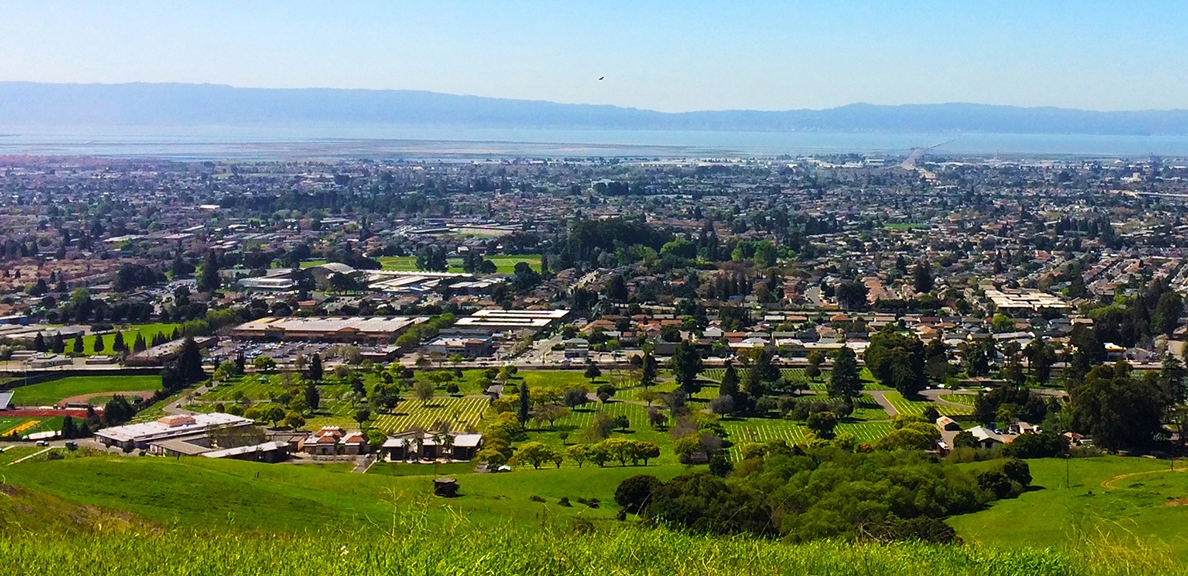
Whose Land Are You On?
BY Maha Sanad
November 23, 2021
November is Native American Heritage Month, a time meant to honor America’s Native peoples and their land that we reside on. The Cal State East Bay Hayward Campus is located on the land of the Muwekma Ohlone tribe.
Cal State East Bay acknowledges the tribal land that the university sits on along with the history of displacement. One recent initiative is the land acknowledgment that some Cal State East Bay faculty, staff, and departments have adopted.
The land acknowledgment recognizes that Cal State East Bay sits on “the ethno-historic tribal territory of the intermarried Jalquin / Yrgin Chochenyo-Ohlone-speaking tribal group, who were the direct ancestors of some of the lineages enrolled in the Muwekma Ohlone Tribe.”
“The vice chairperson of the tribe, she’s an alum of Cal State Hayward. The history of East Bay parallels the history of so much US colonial history...The displacement has been very regular through generations,” said Claire Valderama-Wallace, a professor in the nursing department.
Valderama-Wallace is a part of a group called the Indigenous Acknowledgement Collective (IAC) who work towards cultivating Cal State East Bay’s relationship with the Muwekma Ohlone peoples. The IAC is made up of faculty, staff, students, and community members who follow the lead of the Muwekma Ohlone tribal leadership and prioritize the tribe’s wishes.
“Something that is at the crux of our work is that among our members and who we follow are members of the Muwekma Ohlone tribal council. Every time we meet every month, there are at least two tribal council members and there’s a flow of communication that is very much guided by our principles that we follow inidigneous leadership,” Valderama-Wallace emphasized.
Valderama-Wallace and the IAC are firm believers that relationship building is at the core of healing and repairing. One way the IAC executes relationship building with the Muwekma Ohlone tribe is open communication and amplifying the tribe’s voices.
“What I think is really beautiful and powerful about how the IAC did it is that the land acknowledgement was literally written by the Muwekma Ohlone tribe. And it's for us to keep learning from, not just reading it to read. It’s not just a document, it's a marker of how we are trying to build trust on our campus with the tribe,” Valderama-Wallace said.
While the land acknowledgment is a step in the right direction, it hasn’t been officially adopted by the university.
“I truly endorse and support it. We haven’t officially adopted it and I don’t think we need to because we’re just doing it,” Cal State East Bay President Cathy Sandeen said. “I have started meeting directly with the chairwoman and other tribal council members of the Muwekma Ohlone tribe, and also have appointed one of our faculty members, Professor Enrique Salmon, as our official tribal liaison. So I think we’ve gone a couple steps even beyond the land acknowledgment in terms of a formal relationship with the tribe.”
The relations between institutions like Cal State East Bay and native peoples whose land those institutions reside on is historically precarious. In acknowledgment of that, the IAC hopes to build and strengthen the relationship between Cal State East Bay and the Muwekma Ohlone tribe.
“I do think having a direct relationship between the head of the tribe and the president of the university is important, and they now have that with me,” President Sandeen said.
President Sandeen is adamant in advocating for raising awareness and providing visibility to the Muwekma Ohlone peoples all throughout the year.
“It’s nice to have a month to remind us but I’d rather it be 365 days a year,” she said.
Those interested in joining or supporting the IAC and their initiatives can contact Valderama-Wallace at claire.valderama-wallace@csueastbay.edu for more information.
To learn more about the Muwkema Ohlone Tribe, visit their website.
Share this story